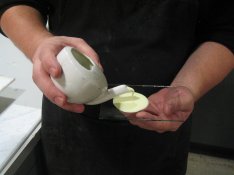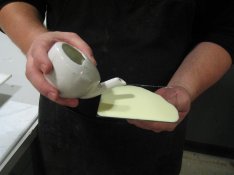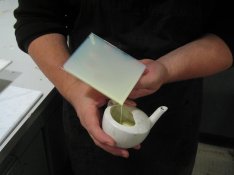Photo Engineer
Subscriber
As I have stated elsewhere, I am not an expert in pouring plates by hand, but my friend, Mark Osterman is and he has made a set of slides to demonstrate this 'teapot' method. This method has been used for over 100 years in one sort or another by artisans who wish to make plates.
My thanks for this to:
Mark Osterman
Process Historian
Advanced Residency Program in Photograph Conservation
George Eastman House
International Museum of Photography
Rochester, NY
He took time out of his busy schedule including preparations for a trip to Europe to get these photos to me in answer to the many questions here on APUG on the methodology of making plates.
My thanks to Mark. I owe him.
PE
My thanks for this to:
Mark Osterman
Process Historian
Advanced Residency Program in Photograph Conservation
George Eastman House
International Museum of Photography
Rochester, NY
He took time out of his busy schedule including preparations for a trip to Europe to get these photos to me in answer to the many questions here on APUG on the methodology of making plates.
My thanks to Mark. I owe him.
PE


























